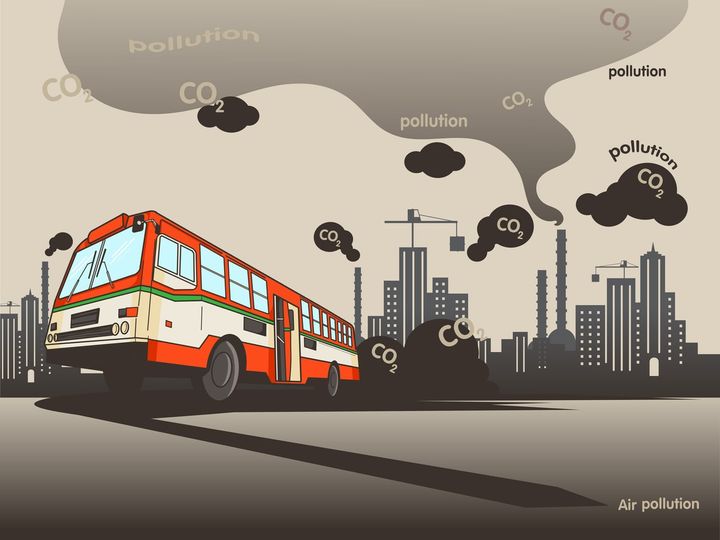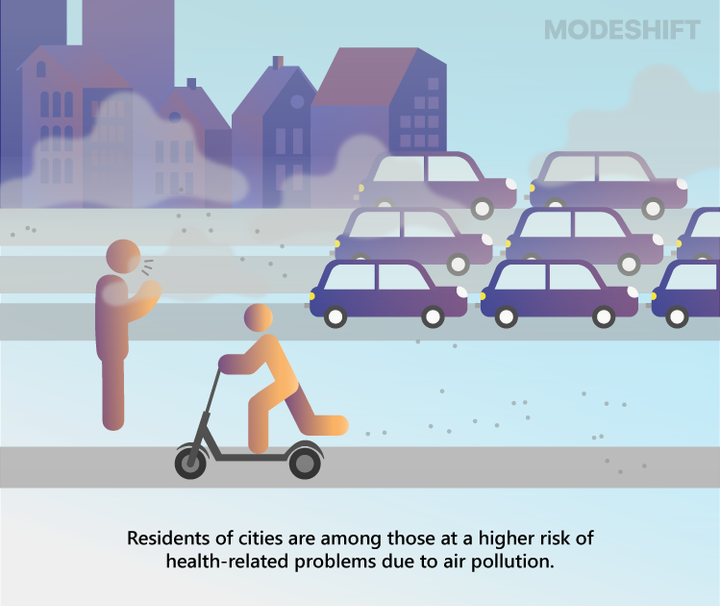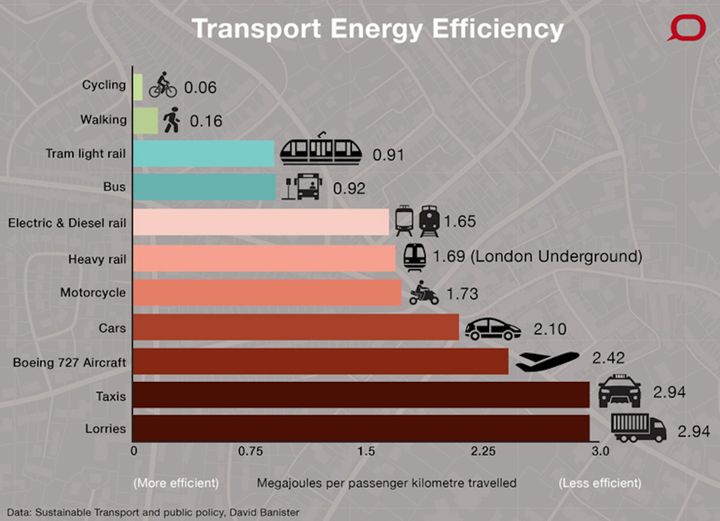


Air pollution poses a severe threat to our environment and public health, with the transportation sector being a major culprit. However, public transportation emerges as a viable solution, offering a sustainable path towards mitigating air pollution and promoting a greener future. This comprehensive article delves into the intricate relationship between public transit and air quality, exploring the mechanisms, strategies, real-world examples, and quantitative data that showcase its potential to reduce emissions and create cleaner, more livable cities.
Public transportation systems, encompassing buses, trains, and subways, have the remarkable ability to significantly curb air pollution. By providing an alternative to private vehicles, these modes of transit directly contribute to reducing the number of cars on the road, thereby decreasing greenhouse gas emissions and other harmful pollutants. The introduction will explore the critical role of public transit in addressing air pollution and outline the key topics to be covered in the article.

Public transportation offers a multitude of benefits in the fight against air pollution. Here are some of the key advantages:
Reduced Greenhouse Gas Emissions: One of the primary advantages of public transportation is its capacity to substantially decrease the number of private vehicles on the road. Fewer cars translates into fewer emissions of greenhouse gases like carbon dioxide, which are major contributors to climate change. This reduction in emissions not only benefits the environment but also promotes public health by improving air quality.
Improved Fuel Efficiency: Public transit vehicles, particularly buses and trains, are generally more fuel-efficient than private cars, especially when carrying multiple passengers. This improved fuel efficiency results in lower emissions per passenger-mile traveled, further reducing the transportation sector's environmental impact.
| Mode of Transportation | Fuel Efficiency (Passenger-Miles per Gallon) |
|---|---|
| Bus | 100-200 |
| Train | 80-120 |
| Private Car | 25-35 |
As evident from the table, public transit modes like buses and trains offer significantly better fuel efficiency compared to private cars, translating into lower emissions per passenger-mile.
Decreased Traffic Congestion: Congested traffic leads to increased idling time and higher emissions from vehicles. By reducing the overall number of vehicles on the road, public transportation can alleviate traffic congestion, resulting in fewer emissions from idling vehicles and smoother traffic flow.
Public transportation systems directly contribute to reducing air pollution through the following mechanisms:
Fewer Vehicles on the Road: When people choose to use public transit instead of driving their personal vehicles, it directly leads to a reduction in the overall number of cars on the road. This decrease in vehicle volume translates into lower emissions of pollutants like:
Nitrogen oxides
Particulate matter
Carbon monoxide
These pollutants can have detrimental effects on human health and the environment, contributing to respiratory issues, smog formation, and climate change.
Lower Emissions per Passenger-Mile: Compared to private cars, public transit modes like buses and trains emit significantly fewer emissions per passenger-mile traveled. This is due to their higher occupancy rates and improved fuel efficiency, making them a more environmentally friendly choice for transportation.
| Mode of Transportation | Emissions (Grams of CO2-eq per Passenger-Mile) |
|---|---|
| Bus | 22-92 |
| Train | 30-80 |
| Private Car | 57-322 |
The table clearly illustrates the significant emission reduction potential of public transportation compared to private vehicles.
Facilitation of Higher-Density Development: Public transportation systems encourage higher-density development patterns, which can lead to shorter travel distances and reduced urban sprawl. By promoting compact, walkable communities, public transit indirectly contributes to lower overall emissions from transportation by minimizing the need for long-distance commuting.
The positive impact of public transportation on air quality is supported by numerous statistics and real-world case studies:
Quantifying the Impact: According to the American Public Transportation Association, public transportation in the United States saves approximately 37 million metric tons of carbon dioxide annually, equivalent to the emissions from nearly 5 million households. In major cities like:
New York: Public transit has been shown to reduce carbon dioxide emissions by up to 63% compared to private vehicle travel.
Chicago: Public transit has been shown to reduce carbon dioxide emissions by up to 69% compared to private vehicle travel.
Successful Congestion Pricing Schemes: Cities like London, Stockholm, and Singapore have successfully implemented congestion pricing schemes, which discourage private vehicle use and encourage the adoption of public transportation. These initiatives have effectively reduced air pollution and traffic congestion, demonstrating the positive impact of policies that promote sustainable transportation choices.
London's Congestion Charge: Implemented in 2003, this scheme has led to a 16% reduction in traffic levels and a 12% reduction in emissions within the charging zone.
Stockholm's Congestion Tax: After a trial period in 2006, the permanent implementation of this tax resulted in a 14-18% reduction in emissions from traffic within the city center.
Singapore's Electronic Road Pricing: This pioneering system, introduced in 1998, has helped reduce traffic volumes by up to 25% in the central business district, leading to improved air quality.
These real-world examples showcase the tangible benefits of implementing policies that encourage the use of public transportation and discourage private vehicle usage in urban areas.
To maximize the air quality benefits of public transportation, it is crucial to encourage and facilitate its widespread adoption. Some effective strategies include:
Improving Accessibility and Reliability: Investing in infrastructure, expanding routes, and increasing service frequency can make public transit more convenient and attractive to potential users. By enhancing accessibility and reliability, transportation authorities can incentivize more people to choose public transportation over private vehicles.
Implementing Policies and Incentives: Measures such as congestion pricing, parking fees, and tax incentives for public transit users can discourage private vehicle use and promote a shift towards public transportation. These policies not only encourage sustainable transportation choices but also generate revenue that can be reinvested in improving public transit systems.
Enhancing the User Experience: Providing real-time information, comfortable facilities, and integrated fare systems can improve the overall public transit experience and encourage more people to choose this mode of transportation. User-centered design and seamless integration with other modes of transportation, such as walking and cycling, can further enhance the appeal of public transit.
Key aspects of an enhanced user experience:
Real-time arrival/departure information
Comfortable seating and amenities
Integrated payment systems
Multimodal connectivity (e.g., bike racks, pedestrian access)
Accessibility for individuals with disabilities
Public Awareness Campaigns: Educating the public about the environmental and health benefits of public transportation, as well as its cost-effectiveness, can help change perceptions and encourage its adoption. Targeted awareness campaigns can highlight the positive impacts of public transit and promote sustainable transportation choices.
Potential campaign themes:
Environmental benefits (reduced emissions, improved air quality)
Health benefits (reduced exposure to air pollution, increased physical activity)
Cost savings (compared to private vehicle ownership and operation)
Convenience and time savings (in congested urban areas)
While public transportation offers significant benefits in reducing air pollution, there are challenges that need to be addressed:

Convenience and Accessibility: For many people, private vehicles are perceived as more convenient, especially in areas with limited public transit options. Expanding and improving public transportation networks, as well as integrating with other modes of transportation, can help overcome this barrier and make public transit a more viable choice.
Potential solutions:
Expanding routes and service frequency
Improving multimodal connectivity (e.g., park-and-ride facilities, bike-sharing integration)
Implementing demand-responsive services (e.g., on-demand shuttles, ride-sharing)
Cost and Affordability: Public transit fares may be perceived as expensive by some users, particularly those with lower incomes. Subsidies, discounts, and integrated fare systems can make public transportation more affordable and attractive, ensuring equitable access for all members of the community.
Potential solutions:
Subsidized fares for low-income individuals and families
Employer-sponsored transit benefits
Integrated fare systems with discounts for frequent users
Public Perception and Behavior Change: Encouraging a shift from private vehicle use to public transit often requires changing deeply ingrained habits and perceptions. Public awareness campaigns, incentives, and improved user experiences can facilitate this behavior change by highlighting the benefits of public transportation and making it a more appealing option.
Potential solutions:
Public education campaigns highlighting the benefits of public transit
Incentives for trying public transportation (e.g., free trial periods, discounts)
Gamification and rewards programs for regular public transit use
Public transportation plays a pivotal role in reducing air pollution and promoting a more sustainable future. By providing an alternative to private vehicles, public transit systems can significantly decrease greenhouse gas emissions, improve fuel efficiency, and alleviate traffic congestion. However, realizing the full potential of public transportation in mitigating air pollution requires a concerted effort from policymakers, transportation authorities, and the public.
Investing in infrastructure, implementing supportive policies, and raising awareness about the benefits of public transit are essential steps in this endeavor. As individuals, we can contribute to this effort by choosing public transportation whenever possible, supporting initiatives that promote its adoption, and advocating for policies that prioritize sustainable transportation solutions. Together, we can create cleaner, healthier cities and a more livable planet for generations to come.
Using public transportation like buses, trains, and subways is an effective alternative to private vehicles that can significantly reduce air pollution in cities.
Public transit vehicles are generally more fuel-efficient and emit fewer pollutants per passenger-mile traveled compared to private cars, leading to improved air quality.
Implementing policies such as congestion pricing, parking fees, and tax incentives for public transit users can discourage private vehicle use and promote a shift towards public transportation.
Expanding routes, increasing service frequency, and enhancing multimodal connectivity can make public transit more convenient and accessible, encouraging more people to choose it over private vehicles.
Perceived convenience of private vehicles, cost and affordability concerns, and the need for behavior change are some challenges in promoting widespread public transit adoption.
Public awareness campaigns highlighting the environmental, health, and cost benefits of public transportation can change perceptions and encourage sustainable transportation choices.
Implementing technologies like electric buses, real-time information systems, and integrated fare systems can enhance the user experience and attract more people to public transit.
Promoting higher-density development patterns and walkable communities can reduce urban sprawl and the need for long-distance commuting, indirectly contributing to lower emissions.
Reducing air pollution from transportation can also alleviate traffic congestion, improve public health, and contribute to mitigating climate change.
Individuals can contribute by choosing public transportation whenever possible, supporting initiatives that promote its adoption, and advocating for policies that prioritize sustainable transportation solutions.

Sarah isn't your average gearhead. With a double major in Mechanical Engineering and Automotive Technology, she dived straight into the world of car repair. After 15 years of turning wrenches at dealerships and independent shops, Sarah joined MICDOT to share her expertise and passion for making cars run like new. Her in-depth knowledge and knack for explaining complex issues in simple terms make her a valuable asset to our team.






